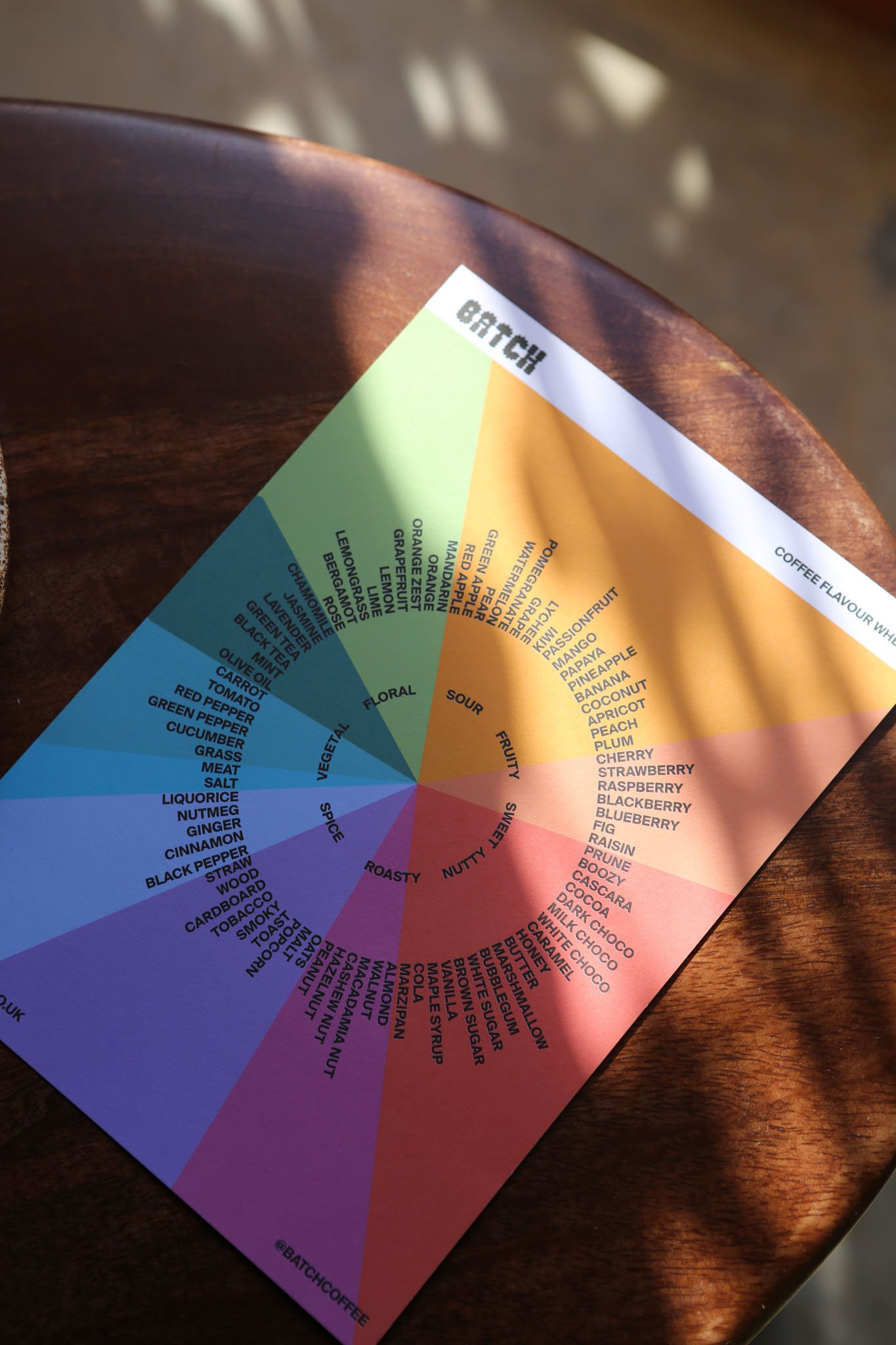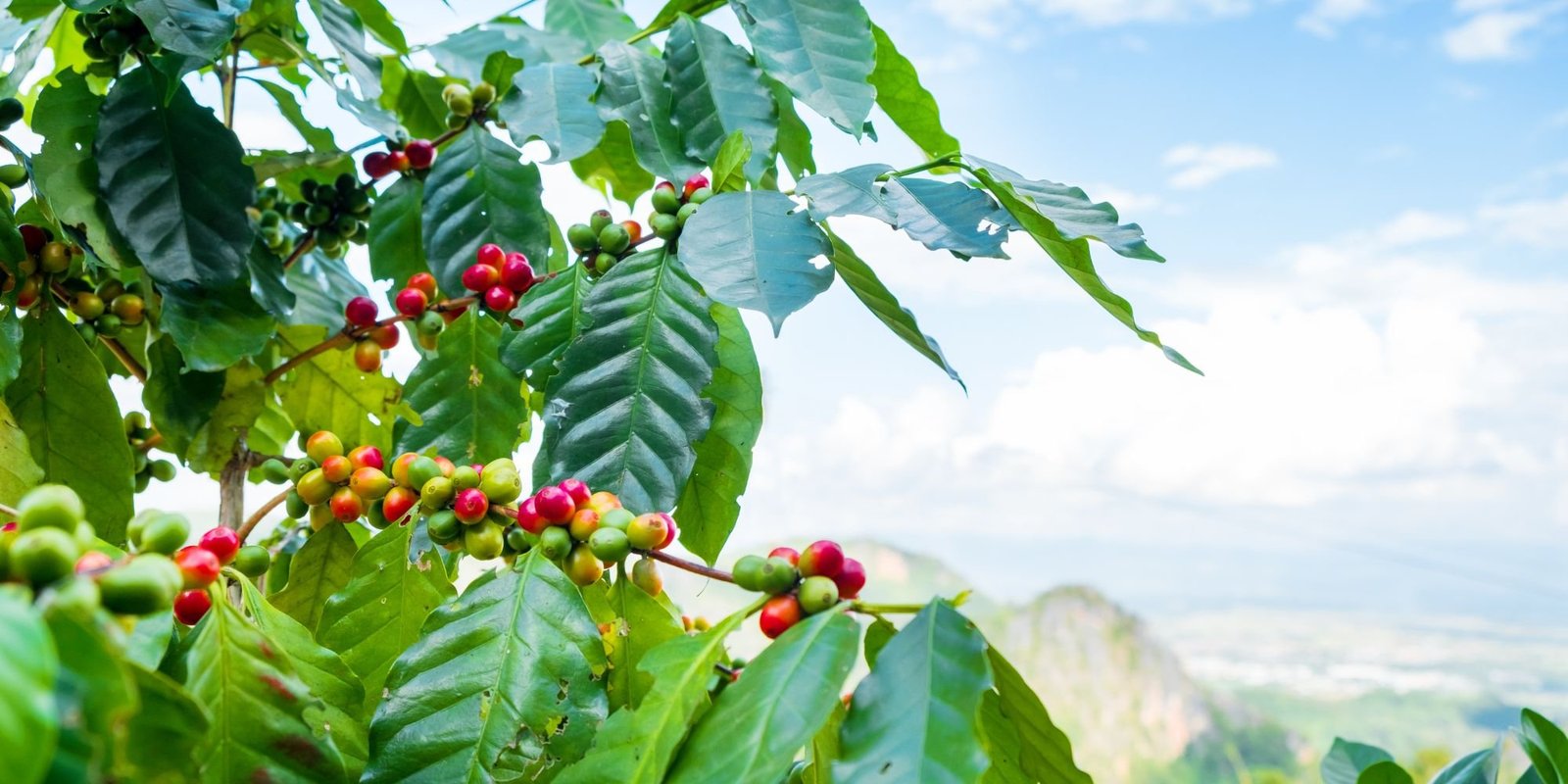The wonderful chocolate brown coffee bean that we all rely on to fill our cup with delicious brews and energise us for the day or night ahead.
But what exactly is a coffee bean? It certainly doesn’t fall into many of the aspects of the bean category that one would expect. A little like a coconut which doesn’t fall into the nut category.
Skip To:
.
Well, hold onto your coffee cups and let us fill you in on the ins and outs of coffee beans.
Why Trust Me?
I’m Tom and I have been working in the coffee industry for over 10 years, starting my journey as a barista in Australia, working on coffee farms in South America and roasting coffee in The UK.
Today I review and write about speciality coffee. I am the founder of Batch Coffee Club, which showcases the very best coffee from around the world.
Related Content
Origins and Anatomy of Coffee Beans.
Brief history of coffee
Historians believe that coffee was discovered in either Ethiopia or Yemen around 800 AD. A common story about a goat herder called Kaldi found his goats vigorously jumping after eating the fruits of a particular type of plant.
Coffee would have then been brewed as a tea before legend has it that a village burnt down inadvertently roasting the coffee seeds which were then brewed to make the coffee we now know.
Coffee first appeared in history in the 16th century and quickly became traded throughout the world. In the early 18th century 7 coffee seeds were smuggled out of Yemen which became the first coffee plants to grow in Brazil and the Americas for that matter.
This transformed coffee into a drink that everybody consumed as coffee production in the Americas boomed.
Like I said – a brief history into coffee. If you’d like a full history of coffee checkout the book, ‘Uncommon Grounds: The History of Coffee and how it Transformed our World’ by Mark Penergrast.
Coffee bean anatomy
As I hinted above the coffee is actually a fruit (like a coconut is actually a fruit not a nut).
The name coffee bean was just a reflection of the appearance and resemblance of beans.
Coffee starts its life as a flower which turns into a small green fruit. After a small amount of time to ripen the green fruit turns red or in some cases yellow or orange.
This is when the coffee cherry is harvested and processed.
The coffee cherry
There are a few layers that make up the anatomy of a coffee bean. The outer layer of a coffee cherry is the fruity flesh which is often referred to as cascara (in the Americas) and can be brewed into a tea.
Underneath the fruity layer there are then layers of slimy mucilage which are eventually (depending on the processing method) stripped away from the coffee seed at the centre.
The coffee seed is dried and is the raw product that is then used by coffee roasters to produce the roasted coffee beans that we purchase.
Green coffee beans
Green coffee beans is a phrase that you may hear when you’re in a coffee roastery.
Green coffee which can sometimes be referred to as raw coffee is essentially the product that has been harvested, processed and dried at origin before (most of the time) imported into a coffee consuming country.
Green coffee is tough and has around 10% moisture.
Unlike its roasted counterpart, green coffee beans are more durable and you would struggle to grind green coffee.
If you managed to grind the green coffee and were to brew the ground, you would probably be unimpressed by the lack of body and overall sour vegetal flavour profile.
Types of coffee beans
There are four main types of coffee: Arabica, Robusta Liberica and Excelsa coffee.
The two former types of coffee make up the vast majority of production throughout the world. With Arabica making up 2 thirds while Robusta the other third.
Within these types of coffee plant there are many varieties referred to as a varietal. You may have seen the varietal on the back of a coffee bag such as Bourbon, Caturra or Typica.
Robusta coffee is often used in blends or used in the commercial coffee industry and end up as processed coffee products such as instant coffee. This is because the flavour profile of Robusta coffee is less complex than Arabica while it naturally contains more caffeine.
When roasted to a certain degree Robusta coffee will add body and depth.
Arabica is much harder to grow but usually contains a superior flavour profile and fetches a higher price for the coffee farmer. It also grows in fairly specific areas (at high altitudes and within 20 degrees of the equator).
From origin to cup.
As discussed above coffee fruits otherwise known as coffee cherries are harvested by hand or by machine.
The harvested coffee cherries are then subjected to various processes.
Firstly, if the coffee beans have been harvested by a machine they are sorted into ripe and unripe cherries, this is usually done by tipping the harvested cherries into a water bath where the ripe cherries sink and over ripe float.
The next part of the process determines the ‘process label’ the coffee is given on your bag of coffee. Natural coffees are now dried with the fruit intact (but removed at a later point) whereas washed coffees have the fruit removed in a process called de-pulping.
Here, the various layers of the coffee fruit and mucilage are removed and later dried. There are now many forms of washed coffee, for instance honey processed coffee is the outer layer of the fruit removed but keeps the mucilage intact for the drying.
However the coffee is processed, the coffee is dried until there is around 10% moisture. At this point it is exported to coffee consuming countries or sold within the producing country.
Are coffee beans good for you?
One of the distinguishing factors of coffee beans and the reason why it was such an appealing beverage when it was discovered through to the present today is the caffeine content in coffee beans. Without caffeine there is no way that coffee beans would have become one of the most traded commodities in the world.
Caffeine as we all know has certain effects on the body, it invigorates and energises us but can also have negative side effects such as insomnia and raise levels of anxiety.
As long as you don’t overdo caffeine – in this case coffee and consume up to the recommended daily limit of 400mg of caffeine. Which works out as 2 or 3 coffees.
Coffee does have many health benefits too. For instance it has been linked to prevention of liver diseases and dementia. Coffee also is naturally high in antioxidants which are linked to many other health benefits.
Final Thoughts.
There is far more to those wonderful coffee beans that we take for granted – they aren’t even a bean in the first place! Hopefully this insight into coffee bean origins and the journey that each bean goes on to get to your cup will help you appreciate every sip even more.
FAQs
What’s the difference between Arabica and Robusta Flavour Profiles?
Typically, Arabica coffee has a much more complex flavour profile than that of robusta which usually has a fairly unpleasant taste which is why Robusta coffee is usually over roasted to a dark roast profile where the roasty, smokey flaours overpower any other flavour note. Arabica on the other hand can be roasted light in some cases to highlight floral, citric or fruity flavours, while some medium roasts are better for varietals that showcase a more sweet chocolatey profile.
How are coffee beans decaffeinated?
There are a number of techniques that are used to day to decaffeinate coffee beans. These include, CO2 method, swiss water and sugar cane. The processes use various techniques to extract the caffeine in the most efficient way without disrupting the flavour profile of the coffee beans.
Why do green coffee beans need to be roasted?
Green coffee beans are not structurally capable of producing a brewed coffee of any quality. The moisture content is too high and the brew water would not be able to extract any of the soluble compounds. Add to this the the coffee undergoes several structural changes during the roast that enables the roasted been to produce a brewed coffee.
Can you consume raw coffee beans?
Raw coffee beans are safe to consume, however they will not be particularly pleasant pre roast.
What are the various coffee bean processing methods?
There are many coffee bean processing methods today with tweeks being made to the processing creating new names. Here are a few different ones that you may see on a coffee bag:
Washed
Natural
Semi Washed
Honey
Pulped Natural
Black Honey
White Honey
Monsooned
Anaerobic
Learn more about Natural vs Washed coffee beans.










